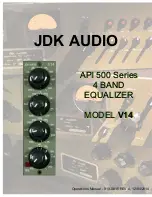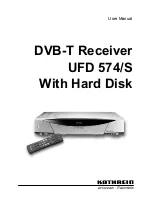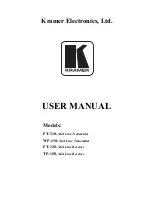
STH-DCSG
U
SER
’
S
M
ANUAL
©
2005
V
IDERE
D
ESIGN
10
electrical line frequency is 50 Hz. For these countries, there is a mode to
change the frame rates of the STH-DCSG to sub-multiples of 50 Hz. These
frame rates are shown in the last column of Table 1.
The frame rate mode of the STH-DCSG device can be changed by using the
Firmware Parameter dialog – see Section 7.6.
3.4 Multiple
Devices
Multiple STH-DCSG devices can be attached to the same IEEE 1394 bus.
When streaming video at the same frame rate, they are synchronized, so
that they capture images at the same time.
Each IEEE 1394 PC Card or PCI Card defines a separate IEEE 1394 bus.
The two or three ports on the card all belong to the same bus, as does any
IEEE 1394 hub connected to these ports. Separate PC Cards and PCI Cards
cannot be connected to each other.
The number of devices that can simultaneously send video is determined by
the maximum bandwidth of the bus for isochronous transfers: 32 MB/s.
This rate cannot be exceeded by the combined video streams on the bus.
Table 2 shows the bandwidth requirements for the STH-DCSG in various
modes and for various frame rates. Using this table, it is possible to
determine the maximum number devices that can stream video
simultaneously. For example, at 15 Hz and 640x480 resolution, a
maximum of 3 STH-DCSG devices can send video information at the same
time.
The bus bandwidth consumed by a device is more than would be expected
from just counting the number of bytes in each frame, because there are
blank cycles on the bus, when no data is being transmitted, even though the
bandwidth is reserved. Thus, it makes no difference whether the rate is 30
Hz or 25 Hz, the bus bandwidth consumed is the same.
Frame
size
Bus MB per
frame -
stereo
30 / 25
Hz
15 / 12.5
Hz
7.5 / 6.25
Hz
3.75 /
3.125 Hz
640x480
0.683 MB
20.5 MB
10.2 MB
5.12 MB
2.6 MB
320x240
0.171
5.12 MB
2.56 MB
1.28 MB
N/A
Table 2 Bus bandwidth requirements at different frame rates.











































